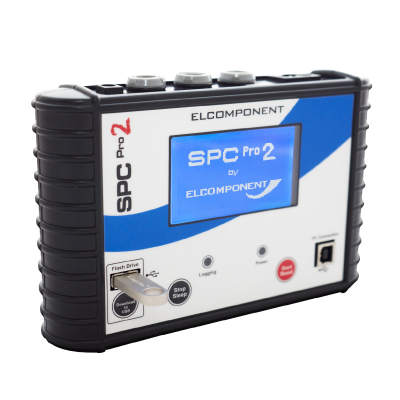

This device fits in a 2 1/ 16-inch hole and has a threaded plastic locking collar. The connection and setup are easy by following the prompts in the app. Veratron’s VL Flex Marine app is designed to calibrate all Veratron gauges via Bluetooth. We connected a charger to the battery, and the red arrow pointing upward to depict outflow changed to the green inflow arrow pointing downward and registered 8 amps-normal for our charger. We connected an LED strip light to the system and toggled the gauge to display amperage flow, and read the flow to be about 1 amp, as expected for the light.

It was near 12 volts and registered a large fraction of full. What We Saw: Once connected, the gauge displayed voltage on our 12-volt bank. For a step-by-step explanation of this installation, see our article “ Installing a Battery Monitoring System”.
#BATTERY LOGGER PRO INSTALL#
With one practice run-we recommend doing it on a bench-the actual install time could be minimized, with the exception of drilling the gauge and toggle-button holes, and pulling the wires. With a few missteps, the gauge took about 40 minutes to connect and make operational. Installation: It was a complicated installation however, the instructions were clear and easy to follow. Separate IBM kits are available for 12- and 24-volt onboard DC systems. In the Box: The kit comes with a gauge, a locking collar, a 19.6-foot wiring umbilical cord with pre-installed connectors for the gauge, button, battery system and other VDO gauges, and a sensor shunt that clamps to the negative battery terminal to measure amperage in and out. Some of these devices can be programmed with a battery’s amp capacity and keep track of capacity used and remaining. So, we’ve tested a few more sophisticated battery–monitor gauges that also measure current draw in amps, along with other parameters, and report that info in real time to help you manage power and its use. Anything above 12.5 volts is considered good to go, but at 12.1, you might be stuck on the sandbar. The power can be supplied by an engine alternator once it is running, but that’s a big train to pull when you add a multitude of DC electrical systems, such as navigation screens, radar, VHF, audio amps, a windlass, multiple sonars, livewell pumps, jack plates, shallow-water anchors, electric trolling motors and more.Ī simple voltmeter works for some DC systems. Even the electronic control unit on today’s marine engines-that brain that makes outboards and inboards do what we want them to do-requires substantial amperage to keep the engine running smoothly. In today’s boats, electric power rivals the importance of engine horsepower.


 0 kommentar(er)
0 kommentar(er)
